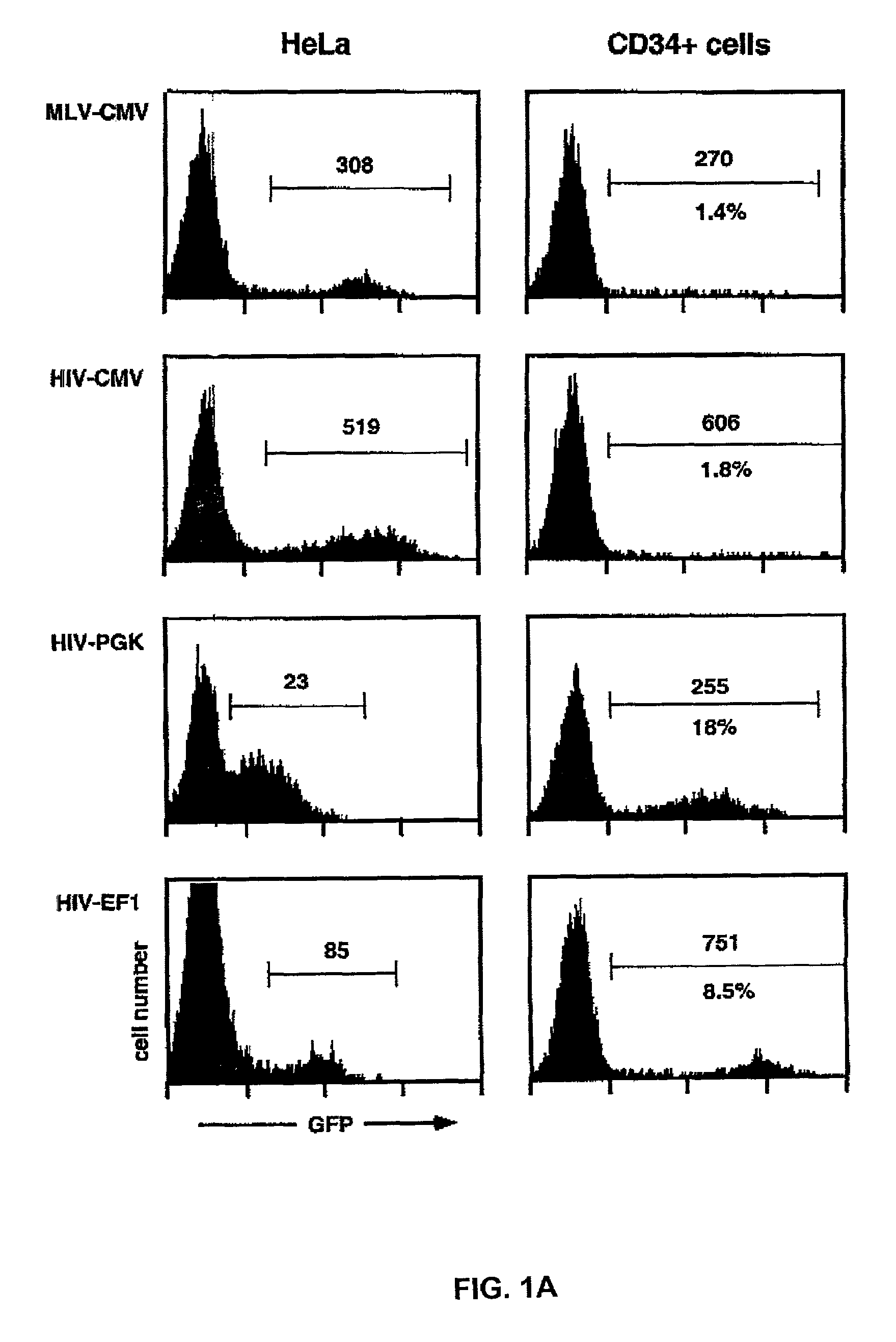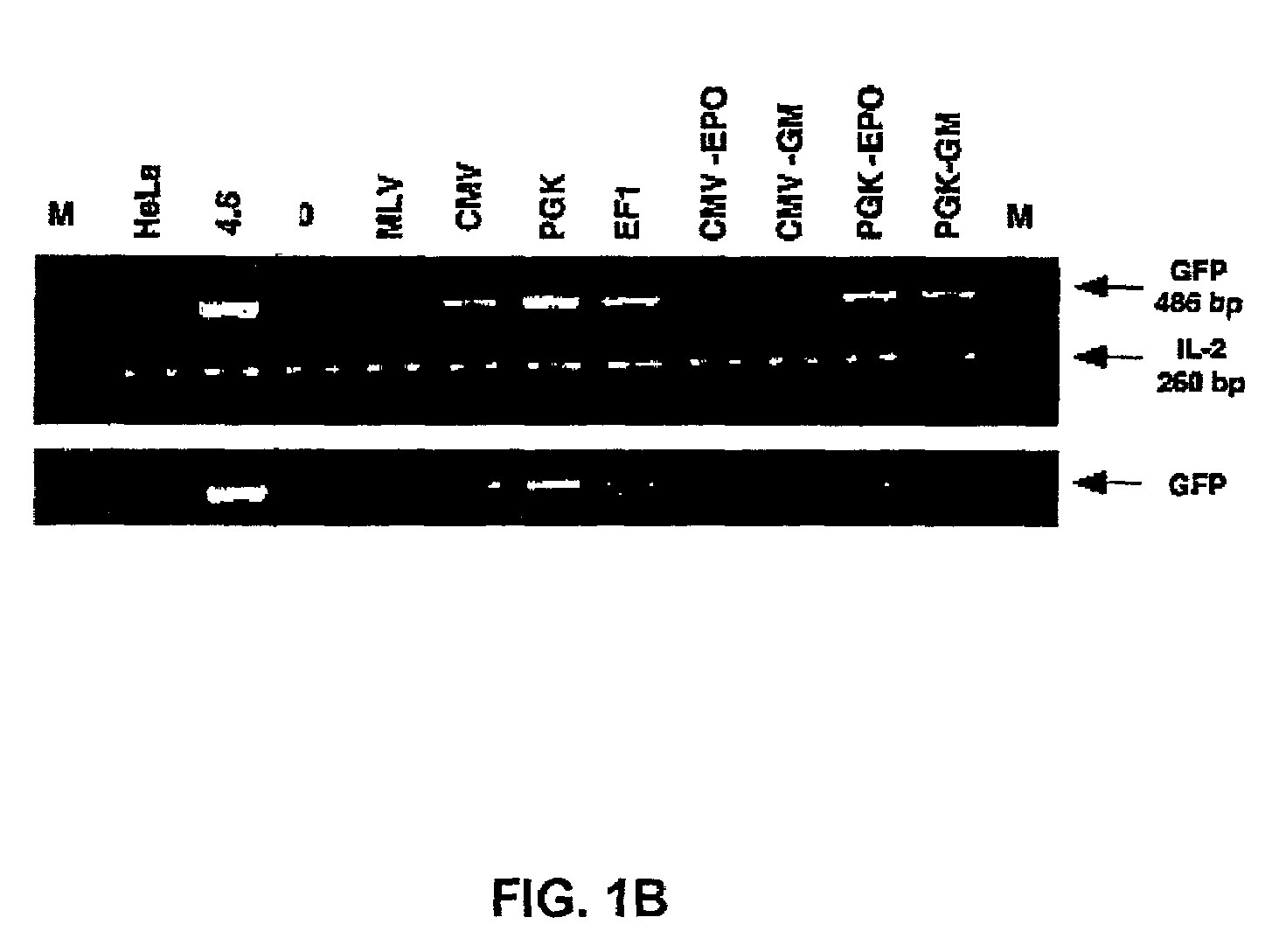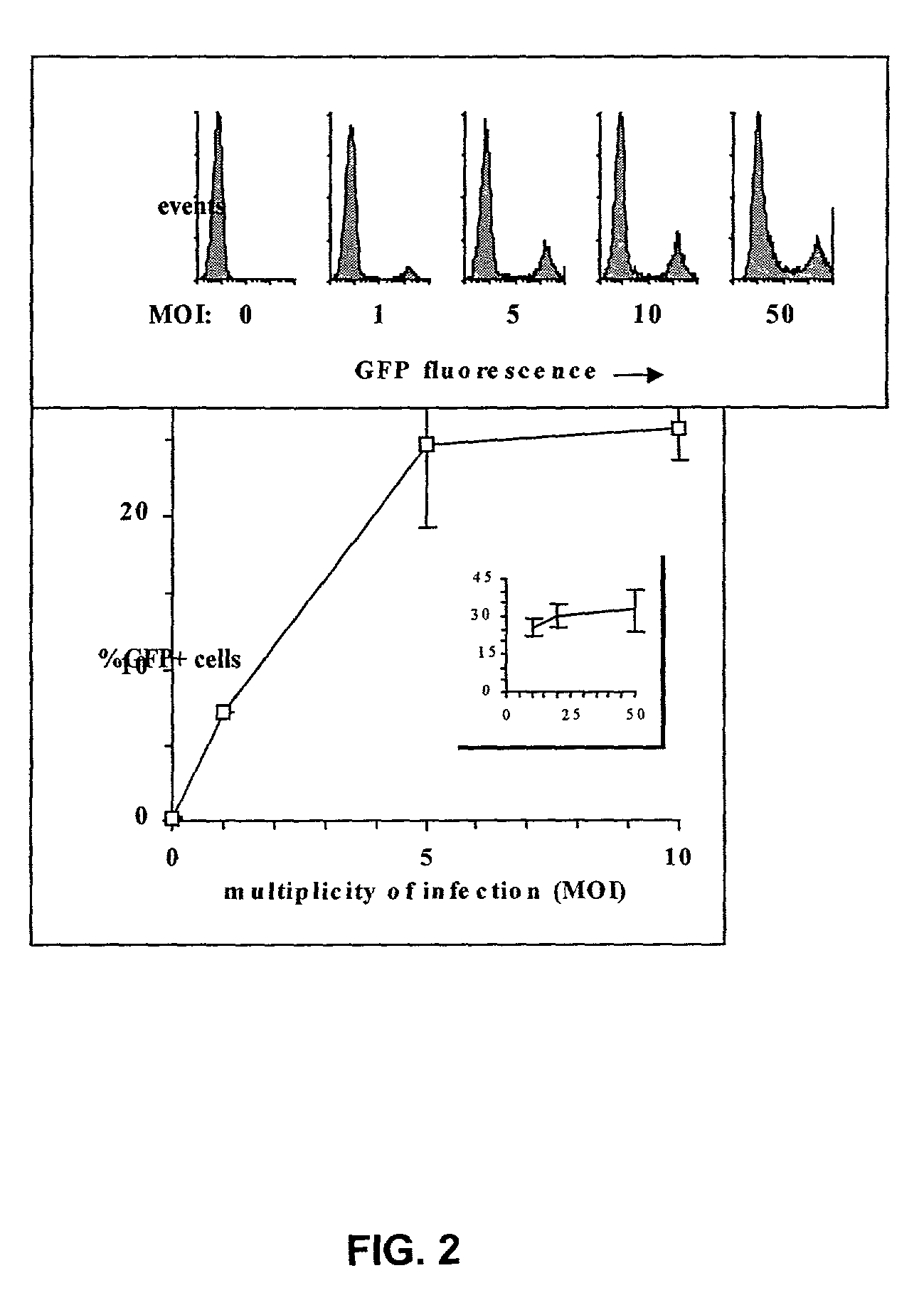Methods and compositions relating to improved lentiviral vectors and their applications
- Summary
- Abstract
- Description
- Claims
- Application Information
AI Technical Summary
Benefits of technology
Problems solved by technology
Method used
Image
Examples
example 1
Transduction of Human Hematopoietic Progenitors with MLV Vectors and HIV-Based Lentivectors
[0172]Human cord blood CD34+ cells were purified by a single round of positive selection with magnetic beads, resulting in preparations approximately 90% pure. Cells were maintained overnight in serum-free medium supplemented with TPO, and were exposed for 24 hrs to MLV- or HIV-based GFP-expressing vectors pseudotyped with the G protein of vesicular stomatitis virus (VSV G), prepared by transient transfection of 293T cells as previously described (Naldini et al., 1996a; Zufferey et al., 1997). The lentiviral packaging system used in these experiments was of a so-called second generation (Zufferey et al., 1997), comprising the HIV-1 gag, pol, tat and rev genes. The multiplicity of infection (MOI) was 10 HeLa-transducing unit (TU) per CD34+ cell. After transduction, cells were incubated for another three days in medium containing FCS, FLT3-L, TPO and SCF, and analyzed by flow cytometry for GFP (...
example 2
Transduction of Human CD34+ Cells as a Function of Increasing Vector Concentration
[0176]The high levels of GFP expression induced by the EF1α-containing HIV-derived vector allowed for a reliable determination of gene transfer efficiency, because even low numbers of transduced cells were easily detected. This vector was thus used to evaluate the influence of the MOI on the transduction efficiency of CD34+ cell (FIG. 2). Although the percentage of GFP+ cells initially increased as a direct function of the MOI, the curve flattened starting at a MOI of 5, reaching a maximum of 25% GFP+ cells (±5% according to experiments) at MOIs 20 and above. In the absence of optimal cytokine-induced proliferation, only a fraction of human CD34+ cells is thus permissive to lentivector-mediated transduction, as previously suggested (Sutton et al., 1999).
example 3
Transgene Expression in Hematopoietic Lineages After Transduction of CD34+ Cells with HIV Vectors Containing PGK and EF1α Promoters
[0177]An important issue for the genetic treatment of a variety of lympho-hematological disorders will be the levels of expression of the putatively therapeutic transgene in the appropriate subset of differentiated cells. In that respect, recent reports using HIV-based vectors with an internal expression cassette driven by the CMV promoter have documented the incapacity of this transcriptional element to induce strong transgene expression in precursors as well as mature blood cells (Miyoshi et al., 1999; Case et al., 1999). To identify more suitable alternatives, hematopoietic progenitors transduced with HIV-based vectors containing the PGK or the EF1α promoters were differentiated in vitro to compare the relative potency of these vectors in various hematopoietic lineages. For this, transduced CD34+ cells were first expanded for 7-14 days in FLT3-L / TPO / S...
PUM
| Property | Measurement | Unit |
|---|---|---|
| Volume | aaaaa | aaaaa |
| Volume | aaaaa | aaaaa |
| Volume | aaaaa | aaaaa |
Abstract
Description
Claims
Application Information
 Login to View More
Login to View More - R&D
- Intellectual Property
- Life Sciences
- Materials
- Tech Scout
- Unparalleled Data Quality
- Higher Quality Content
- 60% Fewer Hallucinations
Browse by: Latest US Patents, China's latest patents, Technical Efficacy Thesaurus, Application Domain, Technology Topic, Popular Technical Reports.
© 2025 PatSnap. All rights reserved.Legal|Privacy policy|Modern Slavery Act Transparency Statement|Sitemap|About US| Contact US: help@patsnap.com



